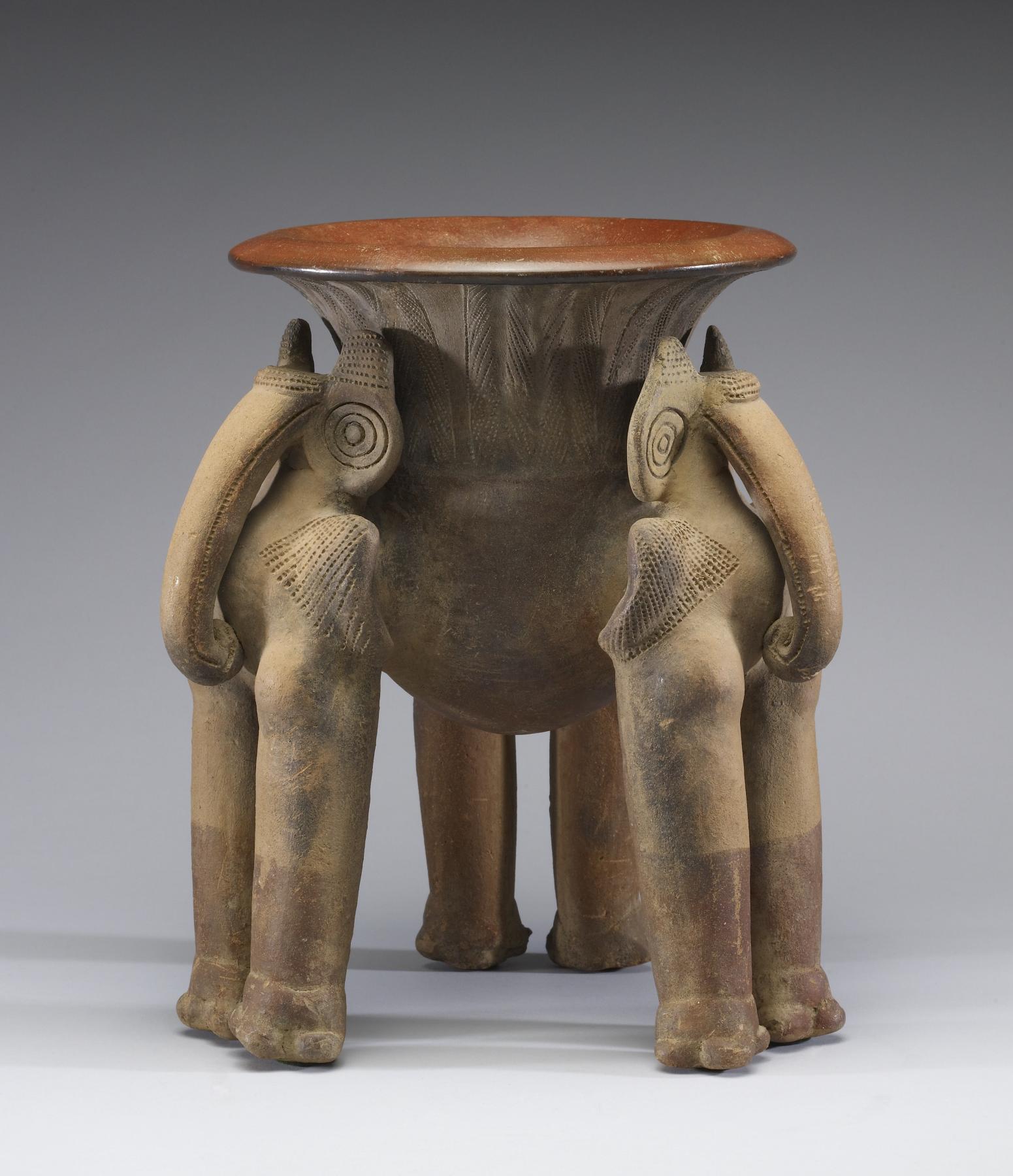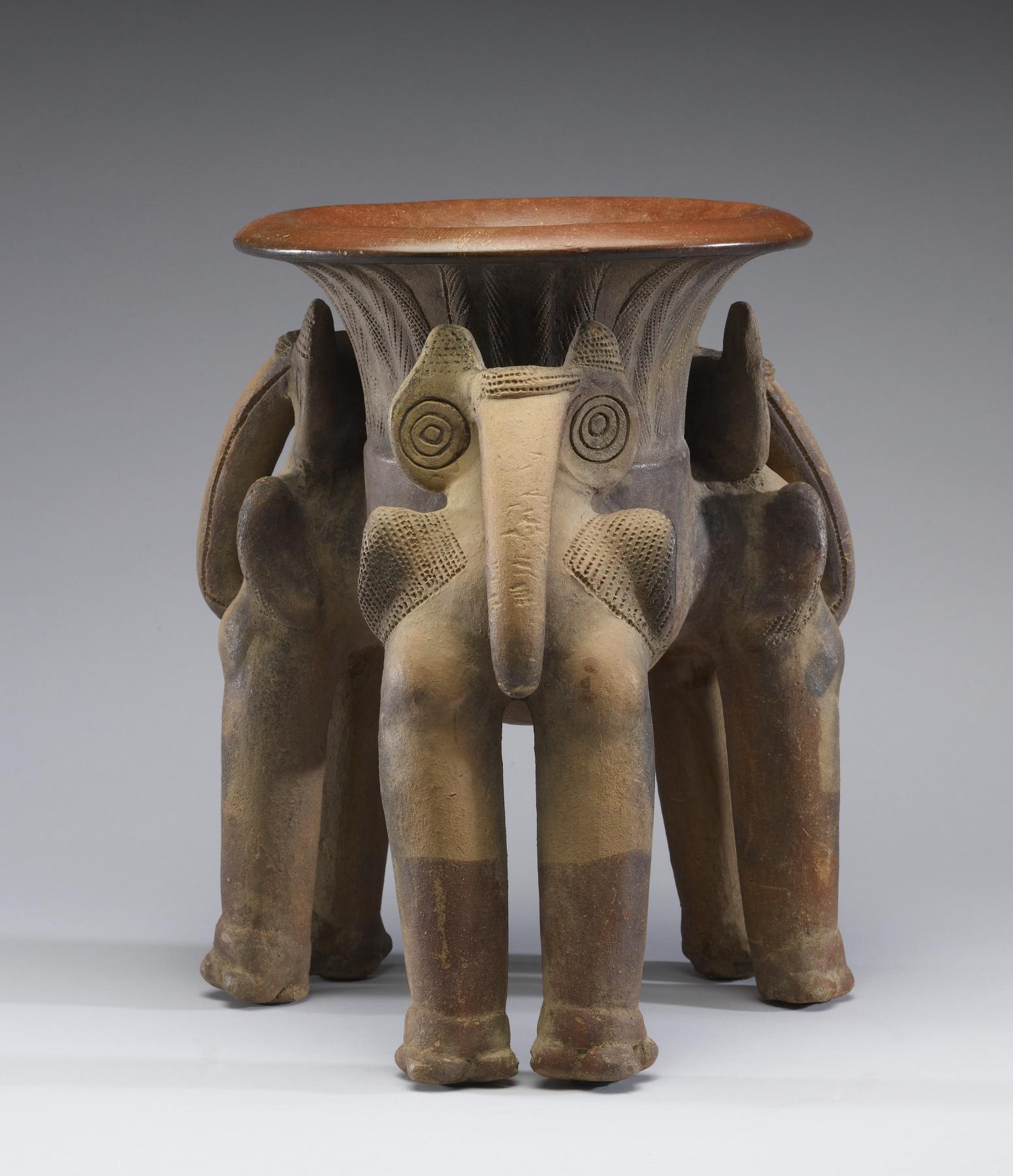Tripod Dish with Animal-Shaped Supports
(Ancient Americas )
The Ticabán style of pottery from the Atlantic Watershed of east-central Costa Rica is characterized by modeling rather than painting to create pictorial forms. Throughout most of Costa Rica and southern Nicaragua during the first half of the first millennium CE, painted imagery was the dominant approach to ceramic embellishment. The best works in the Ticabán style combine a sensuous smoothness of the pottery surface with elegantly shaped vessels and dynamic zoomorphic supports and embellishments. Often these are made of solid clay; the vessels not exploding during the firing process indicates the high degree of technical skill of the region's ancient ceramicists. This dish's tall supports are modeled in the form of a human-owl composite being, perhaps a shamanic entity. The artist harmonized dynamic modeling and delicate punctated areas with the supplely smoothed surface that dominates the vessel. Sparse use of paint accentuates the zoomorphic shapes of the supports. The graceful flare of the vessel's rim adroitly balances the visual heaviness of the substantial zoomorphic supports.
Provenance
Provenance (from the French provenir, 'to come from/forth') is the chronology of the ownership, custody, or location of a historical object. Learn more about provenance at the Walters.
Private collection, New York; Ron Messick Fine Arts, Santa Fe, New Mexico; purchased by John G. Bourne, Sante Fe, 2001; given to John G. Bourne Foundation, 2001 [1]; given to Walters Art Museum, 2013.
[1] according to Bourne Foundation accounts
Exhibitions
| 2012-2013 | Exploring Art of the Ancient Americas: The John Bourne Collection Gift. The Walters Art Museum, Baltimore; Frist Center for the Visual Arts, Nashville. |
Geographies
Costa Rica, Atlantic Watershed (Place of Origin)
Measurements
H: 12 5/16 x W: 10 1/4 x D: 9 7/8 in. (31.2 x 26 x 25.1 cm)
Credit Line
Gift of John G. Bourne Foundation, 2013
Location in Museum
Not on view
Accession Number
In libraries, galleries, museums, and archives, an accession number is a unique identifier assigned to each object in the collection.
In libraries, galleries, museums, and archives, an accession number is a unique identifier assigned to each object in the collection.
2009.20.208






